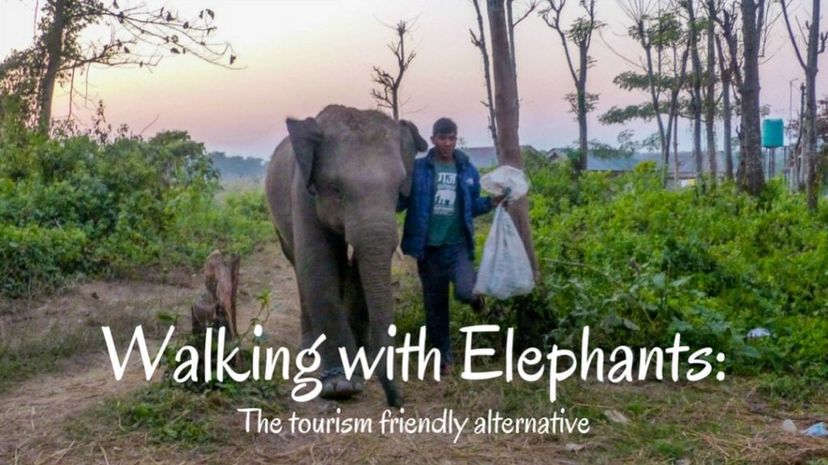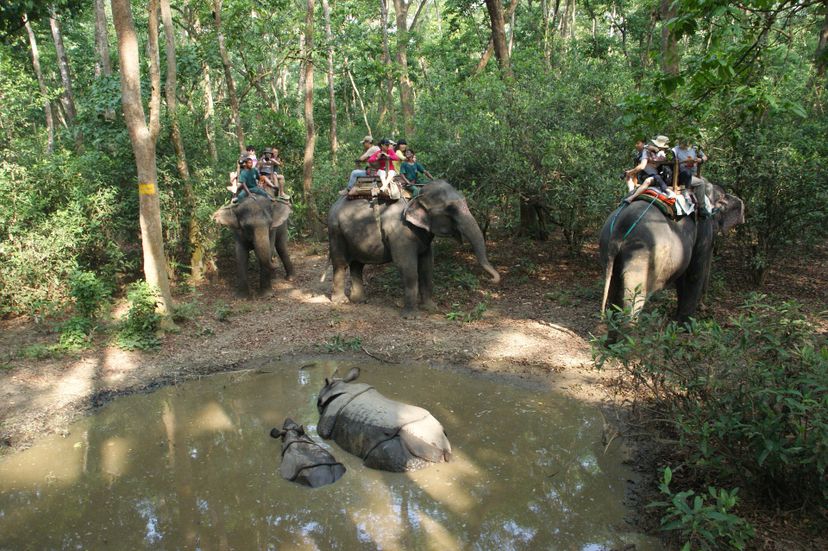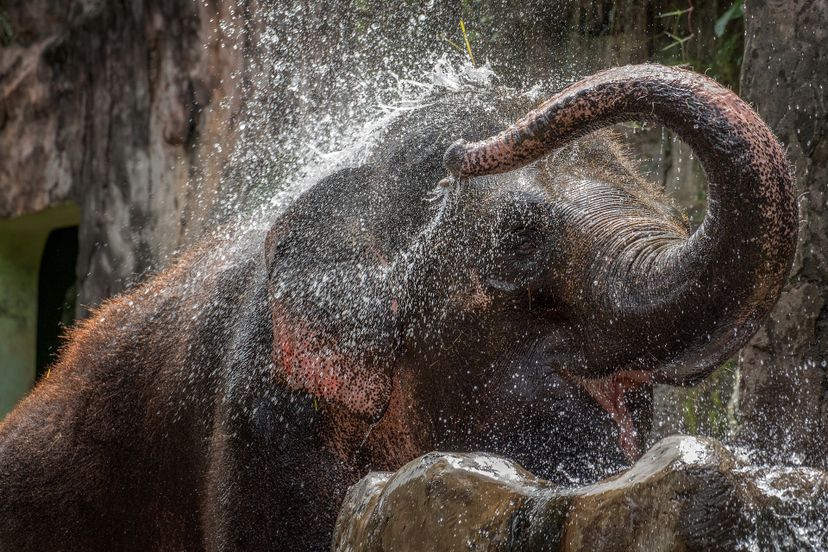
Advertisement
Walking with Elephants in Nepal’s Chitwan National Park
For most people heading to Sauraha located on the outskirts of Chitwan National Park in Nepal, it’s all about the local wildlife that can be seen here. From the one-horned rhino, Great Hornbill and of course the ever elusive Bengal tiger. But of course what everyone wants a glimpse of is the majestic Asian elephants parading up and down the centre of the village daily with their mahouts.
But how can something so beautiful be so controversial? Having spoken to a few locals and visitors alike during our short visit here it’s not hard to see where this has stemmed from through recent years. With over fifty privately owned elephants in the Chitwan region, it’s hard to see how so many have gone under the radar considering elephant trade is illegal throughout Nepal.

Due to the close proximity of India’s border with Nepal, all you need is a few million rupees and a good connection and you can buy yourself one of these giant beauties. Elephants have been part of Nepalese culture for hundreds of years and have a long-standing history in their use for work and transport. But in recent years domesticated elephant numbers have increased due to the ever growing tourism industry, not just in Nepal but throughout Asia. This isn’t a huge surprise when in most countries your best chance of seeing an elephant is at a zoo. So once you get to the likes of Nepal, you can see why tourists are attracted to these elephant rides, due to the constant promotion and offerings of a better jungle experience to get closer to Rhinos and Tigers.

But life for the elephants and mahouts is something far from luxury, we had a chance to visit one of the many privately owned elephant stables in Chitwan, and it wasn’t pleasant. Within minutes of being there and seeing the conditions of the mahouts living quarters and of course the elephants, it was clear that both animal and human lead an isolated life, solely driven by tourism. While on this visit we witness a corrugated roof collapse onto one of the residing elephants and we were ‘lucky’ to see a day old day calf, lucky being the prominent word here. Whilst it was it was with its mother, bales and hay and piles of dung were alight just metres away with smoke bellowing into their enclosure, not ideal conditions for a baby elephant born less than 24 hours ago.
We were saddened to learn that just after three years the baby will be separated from its mother, to start its life of tourism. Compared to ten years of even its full life in the wild. The mahouts don’t have it easy either having to spend a solitary life living in very poor conditions while tending to the elephants 24/7, putting a strain on the relationship between animal and human.
But it’s not all doom and gloom, we met two lovely ladies who in the past few years with the elephant’s owners permission have been given much need attention and medical care, including foot treatment which had been pretty much none existent. Coranne has moved from Canada to spend her days fighting to open the first elephant sanctuary with a few locals and a couple private elephant owners backing her. She has come up with a fantastic project ‘Walking with Elephants’ not only to help fund her project but to show the elephant owners that money can still be made from tourists without the need of elephant rides.
We were introduced to Baboo, he is a 13-year-old bull elephant, one of the youngest at this particular stable. Having just done his day’s work it was fair to say he was pleased with all the fruit we had purchased before we had arrived. So off we went on our walk, well it was more like a jog this beautiful boy could sure go at some pace! It was amazing to be standing so close and watch him go along at his own pace with no one on top of him and no rod to control him, just enjoying his free time with us and being spoilt rotten with apples, vegetables and bananas (he’s particular favourite). He was all trunk vacuuming up the goodies on offer, and wouldn’t be shy to nudge you when he wanted more! Along the walk, we took the main route to help encourage other tourists to show an alternative elephant encounter that is on offer and just how much closer you get and the more interaction you get with these animals when you’re not on top but alongside them.

This walk led us down to the river where Baboo dipped his big hooves into the water and had a small splash around before he’s next round of food.
Before we knew it the sun was setting and we were on our way back to the stable, not before Baboo got himself some good branches to chew for the journey. In all, the walk was about an hour, the cost for two people was Rs1500 (£12) + £2 on fruit with all monies going towards medicine for these ladies to provide care for the elephants based here in Chitwan, and fingers crossed towards the opening of the first sanctuary in Chitwan. Compared to Rs4000 per person (£30) for an elephant ride + park fees, it is such a huge difference in both budget and experience.
Please check out the ‘Walking with Elephants’ Facebook page.
Advertisement
If you’re interested in taking an elephant for a walk please get in touch and we will forward the contact details to you, it’s an unforgettable experience and something we highly recommend anyone visiting Chitwan to partake in.
Advertisement